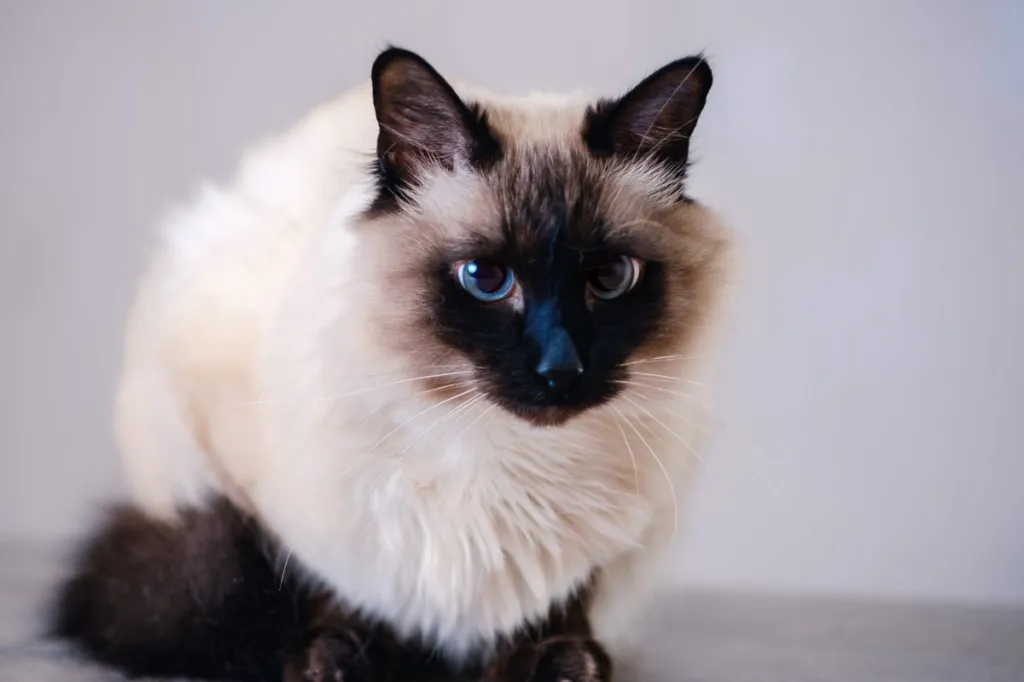The Balinese cat, a breed of extraordinary elegance and intelligence, stands as a testament to feline beauty and charm. Originating in the United States, the Balinese shares its ancestral roots with the Siamese and Javanese breeds. With its luxurious, long-haired coat, graceful build, and striking blue almond-shaped eyes, the Balinese cat captures the hearts of cat enthusiasts around the world.
Named for the exotically graceful dancers on the Indonesian island of Bali, it is often referred to as the “long-haired Siamese.” The Balinese cat boasts a sleek and refined appearance, characterized by its color points and silky fur. Renowned for its vocal and affectionate nature, the Balinese forms strong bonds with its human companions, seeking constant interaction and attention.
When considering a Balinese, it’s advisable to prioritize adopting from rescue organizations or shelters to provide a loving home to a cat in need. However, if you decide to purchase a Balinese kitten, it’s crucial to choose a reputable breeder. Conduct thorough research to ensure that the breeder follows ethical practices and prioritizes the well-being of their cats. Reputable Balinese breeders prioritize the health and temperament of their cats, conduct necessary health screenings, and provide a nurturing environment for the kitties. This active approach ensures that you bring home a healthy and happy kitty while discouraging unethical breeding practices.
Balinese Cat Quick Facts
- Origin: United States
- Size: Medium
- Breed Group: Longhair
- Lifespan: 12-20 years
- Coat: Medium-long, silky, and color-pointed, with colors such as seal, chocolate, blue, lilac, and tortoiseshell
- Temperament: Intelligent, playful, and affectionate
- Exercise Needs: Moderate to high
- Training: Relatively easy to train
- Grooming: Weekly brushing to prevent mats and tangles
- Health: Generally healthy, but can be prone to certain genetic health conditions, such as hypertrophic cardiomyopathy (HCM) and strabismus (crossed eyes).
- Longhaired Siamese have often been noted in litters, but it was considered a flaw, and those kittens were exclusively pets.
- Some breed associations consider the Balinese and the Javanese as the same breed, but the CFA designates the Javanese as a subgroup.
- There are two “styles” of Balinese: old and modern. They relate to head and body shapes,, but they are the same breed.
- Balinese cats are great for allergy sufferers, as they produce less of the protein allergens that cause a reaction.
Balinese Pictures
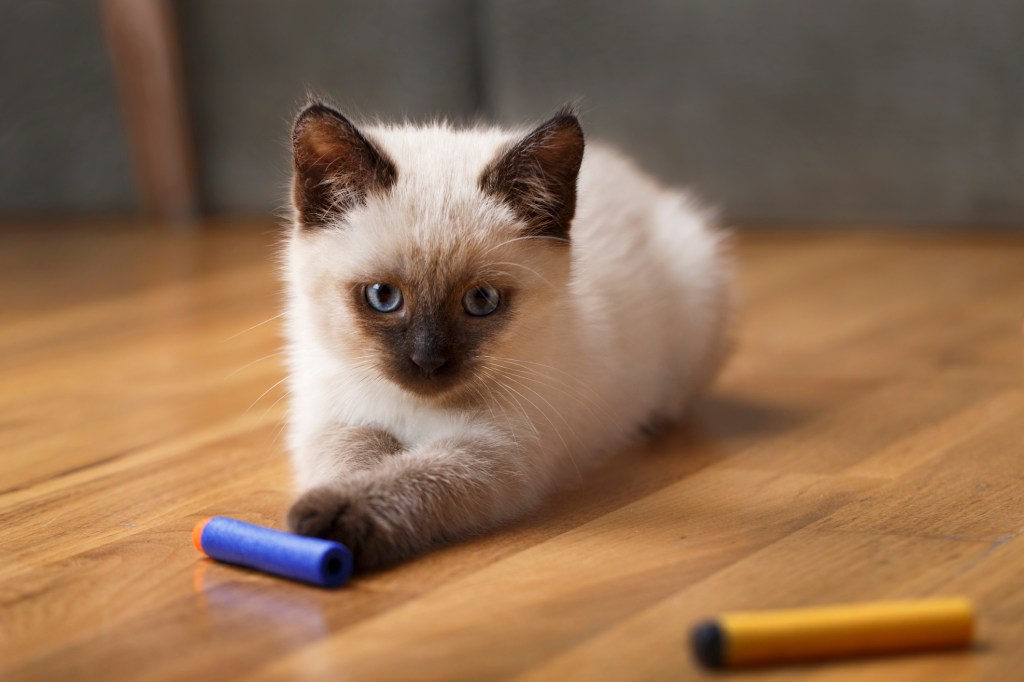
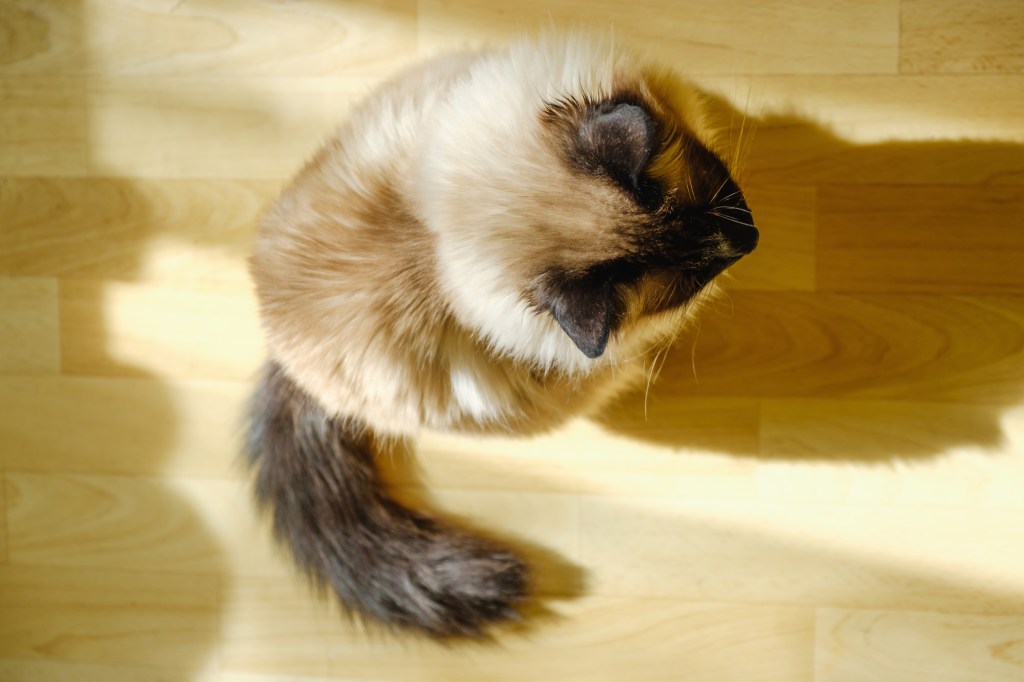

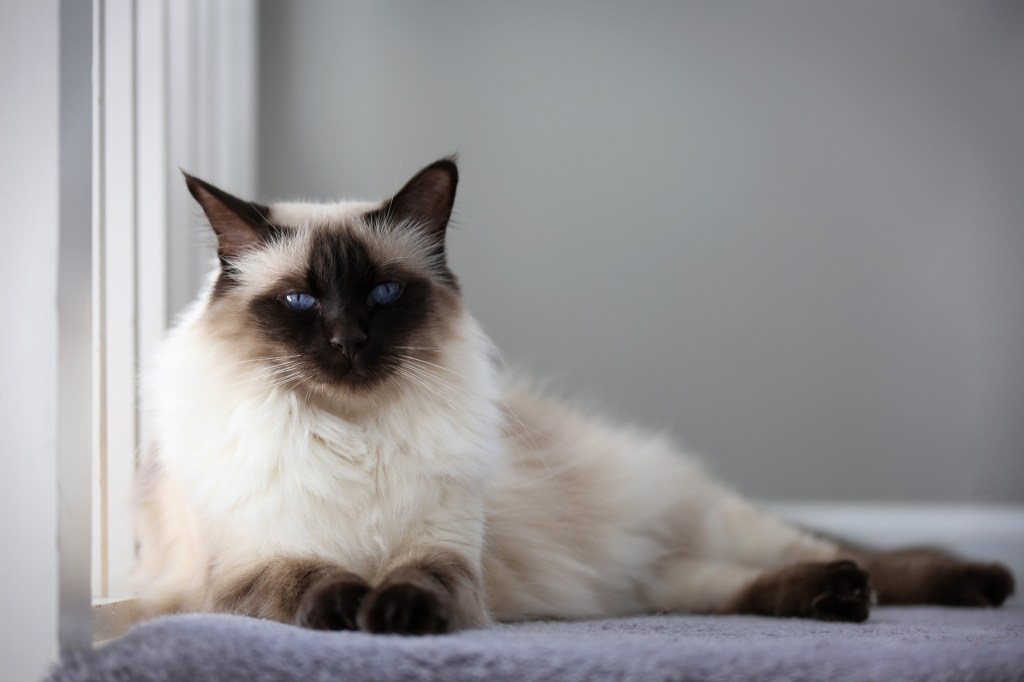
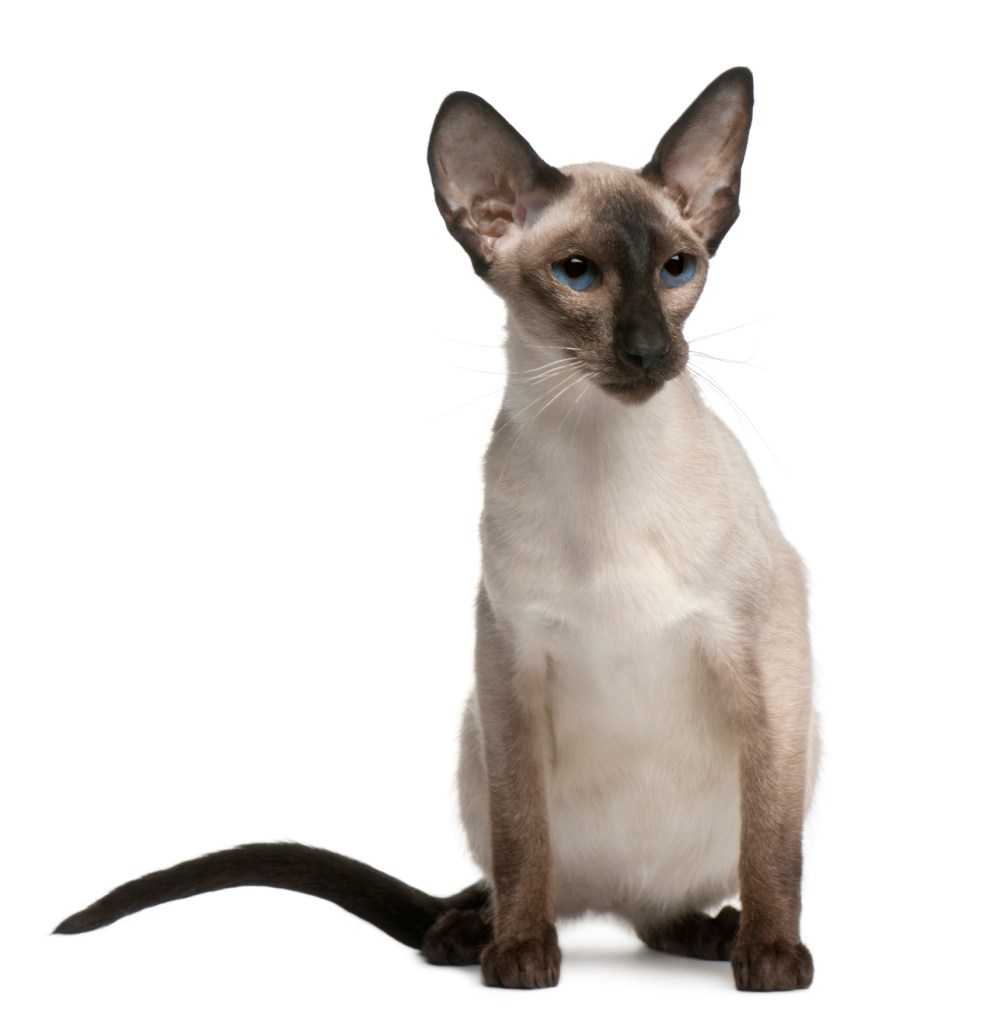
-
Affectionate with Family
Some cat breeds are typically independent and aloof, even if they’ve been raised by the same person since kittenhood; others bond closely to one person and are indifferent to everyone else; and some shower the whole family with affection. Breed isn’t the only factor that goes into affection levels; cats who were raised inside a home with people around feel more comfortable with humans and bond more easily.

See Cats Less Affectionate with Family -
Amount of Shedding
If you’re going to share your home with a cat, you’ll need to deal with some level of cat hair on your clothes and in your house. However, shedding does vary among the breeds. If you’re a neatnik, you’ll need to either pick a low-shedding breed or relax your standards. This furniture cover can make it easier to clean up cat hair and keep it off your sofa!
-
General Health
Due to poor breeding practices, some breeds are prone to certain genetic health problems. This doesn’t mean that every cat of that breed will develop those diseases; it just means that they’re at an increased risk. If you’re looking only for purebred cats or kittens, it’s a good idea to find out which genetic illnesses are common to the breed you’re interested in.
-
Potential for Playfulness
Some cats are perpetual kittens—full of energy and mischief—while others are more serious and sedate. Although a playful kitten sounds endearing, consider how many games of chase the mouse-toy you want to play each day, and whether you have kids or other animals who can stand in as playmates. A classic wand cat toy like this one is perfect for playful felines!
-
Tendency to Vocalize
Some breeds sound off more often than others with meows, yowls, and chattering. When choosing a breed, think about how the cat vocalizes and how often. If constant “conversation” drives you crazy, consider a kitty less likely to chat.
-
Kid-Friendly
Being tolerant of children, sturdy enough to handle the heavy-handed pets and hugs they can dish out, and having a nonchalant attitude toward running, screaming youngsters are all traits that make a kid-friendly cat. Our ratings are generalizations, and they’re not a guarantee of how any breed or individual cat will behave; cats from any breed can be good with children based on their past experiences and personality.
-
Friendly Toward Strangers
Stranger-friendly cats will greet guests with a curious glance or a playful approach; others are shy or indifferent, perhaps even hiding under furniture or skedaddling to another room. However, no matter what the breed, a cat who was exposed to lots of different types, ages, sizes, and shapes of people as a kitten will respond better to strangers as an adult.
-
Easy to Groom
Some breeds require very little in the way of grooming; others require regular brushing to stay clean and healthy. Consider whether you have the time and patience for a cat who needs daily brushing. You should definitely pick up this awesome de-shedding tool for cats of any hair length!
-
Intelligence
Some cat breeds are reputed to be smarter than others. But all cats, if deprived the mental stimulation they need, will make their own busy work. Interactive cat toys are a good way to give a cat a brain workout and keep them out of mischief. This scratcher cat toy can keep your smart kitty busy even when you’re not home!
-
Pet Friendly
Friendliness toward other household animals and friendliness toward humans are two completely different things. Some cats are more likely than others to be accepting of other pets in the home.
Balinese History
Named for the exotically graceful dancers on the Indonesian island of Bali, the Balinese is a longhaired variety of Siamese. It is unknown whether the long hair is the result of a natural mutation or a cross between the Siamese and a longhaired breed such as a Persian or Turkish Angora.
Although longhaired Siamese appeared earlier, the cats did not begin to be developed as a breed until the 1940s and 1950s. The Cat Fanciers Federation recognized the Balinese in 1961, followed by the Cat Fanciers Association in 1970. They are also recognized by the American Cat Fanciers Association and The International Cat Association, as well as other cat registries. Balinese can be outcrossed to Javanese, Siamese, Colorpoint Shorthairs and Oriental Longhairs.
Balinese Size
Balinese are medium-size cats that typically weigh 5 to 10 pounds.
Balinese Personality
The Siamese and the Balinese might differ in coat length, but beneath the skin they are identical. Balinese are extremely fond of their people. They like to be “helpful” and will follow you around and supervise your every move. When you are sitting down, a Balinese will be in your lap, and at night he will be in bed with you, probably under the covers with his head on the pillow. He is frequently underfoot, so he might not be the best choice for people who are unsteady on their feet or use a walker or cane.
A Balinese is perhaps not quite as loud as his relative the Siamese, but he is most definitely just as opinionated. He will tell you exactly what he thinks, and he expects you to pay attention and act on his advice. You can also count on him to “tell all” to visitors, so be grateful that most people are not conversant in the Balinese language.
The Balinese is highly intelligent, agile and athletic, and loves to play. Keep his busy brain active with puzzle toys and his body exercised with teaser toys that he can chase and a big cat tree he can climb. He likes to play fetch, is willing to walk on a leash, and learns tricks easily. He is also a good trainer himself and may be running your household before you know it. Never leave him without any form of entertainment, or you will likely come home to find that he has reprogrammed your DVR to record only nature shows or at the very least decided that your toilet paper rolls and tissue boxes look better empty.
Do not get a Balinese if living with a chatty busybody would drive you insane. On the other hand, if you enjoy having someone to talk to throughout the day, the Balinese can be your best friend. Just be sure you have time to spend with this demanding and social cat. Balinese don’t mind staying home during the day while you go off to earn money to buy cat food, but they will expect you to devote time to them when you are at home. It can be smart to get two of them so they can keep each other company.
Choose a Balinese if you look forward to spending time with and interacting with your cat. This is a loyal and loving feline who will pout and pine if given little or no attention. In the right home, however, he thrives for years.
Balinese Health
Both pedigreed cats and mixed-breed cats have varying incidences of health problems that may be genetic in nature. The same problems that may affect the Siamese can also affect the Balinese, including the following:
- Amyloidosis: This is a disease that occurs when a type of protein called amyloid is deposited in body organs, primarily the liver in members of the Siamese family.
- Asthma/Bronchial Disease: Asthma in cats is a respiratory condition characterized by inflammation and constriction of the airways, leading to breathing difficulties. Similar to asthma in humans, feline asthma can range from mild to severe and may require medical management.
- Congenital Heart Defects: Congenital heart defects in cats are abnormalities in the structure of the heart that are present at birth. These defects can affect the heart’s chambers, valves, or blood vessels, and they can vary in severity. While some congenital heart defects may not cause noticeable symptoms, others can lead to serious health issues.
- Crossed Eyes: Strabismus in cats, also known as “crossed eyes” or “squinting,” is a condition where the eyes are misaligned, meaning they do not point in the same direction. This misalignment can be present from birth (congenital) or may develop later in life due to injury, illness, or neurological issues.
- Gastrointestinal Conditions: Enlarged esophagus in cats, also known as megaesophagus, is a condition characterized by a dilated and weakened esophagus. The esophagus is the muscular tube that carries food from the mouth to the stomach. Megaesophagus can lead to difficulties in swallowing and may result in regurgitation of food and water.
- Hyperesthesia Syndrome: This is a neurological problem that can cause cats to excessively groom themselves, leading to hair loss, and to act frantically, especially when they are touched or petted
- Lymphoma: Lymphoma in cats is a type of cancer that originates in the lymphocytes, which are white blood cells involved in the immune system. It is one of the most common forms of cancer in cats. Lymphoma can affect various organs and tissues in the body, leading to a range of symptoms.
- Nystagmus: This is a neurological disorder that causes involuntary rapid eye movement.
- Progressive Retinal Atrophy: Progressive Retinal Atrophy (PRA) in cats is a genetic disorder that affects the retina, leading to a gradual and irreversible loss of vision. The retina is the part of the eye responsible for detecting light and transmitting signals to the brain for visual interpretation. PRA is not a singular disease but rather a group of genetic conditions that share a similar outcome.
Balinese Care
The fine, silky coat of the Balinese is easily cared for. Comb it once or twice a week with a stainless steel comb to remove dead hair. A bath is rarely necessary. Brush the teeth to prevent periodontal disease. Daily dental hygiene is best, but weekly brushing is better than nothing.
Wipe the corners of the eyes with a soft, damp cloth to remove any discharge. Use a separate area of the cloth for each eye so you don’t run the risk of spreading any infection. Check the ears weekly. If they look dirty, wipe them out with a cotton ball or soft damp cloth moistened with a 50-50 mixture of cider vinegar and warm water. Avoid using cotton swabs, which can damage the interior of the ear.
Keep the litter box spotlessly clean. Like all cats, Balinese are very particular about bathroom hygiene. It’s a good idea to keep a Balinese as an indoor-only cat to protect him from diseases spread by other cats, attacks by dogs or coyotes, and the other dangers that face cats who go outdoors, such as being hit by a car. Balinese who go outdoors also run the risk of being stolen by someone who would like to have such a beautiful cat without paying for it.
Balinese Coat Color And Grooming
Except for coat length, the Siamese and the Balinese are indistinguishable, having a svelte but muscular body with long lines and a wedge-shaped head that is long and tapering from the narrow point of the nose outward to the tips of the ears, forming a triangle. The unusually large ears are wide at the base and pointed at the tip, giving them the same triangular shape as the head. Medium-size eyes are almond-shaped.
The body is often described as tubular and is supported by long, slim legs, with the hind legs higher than the front legs. The Balinese walks on small, dainty, oval paws and swishes a long, plumed tail that tapers to a fine point. The appearance of the body is softened by a medium-length coat that is fine and silky. It is longest on the plumed tail.
The Balinese comes in the same point colors as the Siamese: seal, chocolate, blue and lilac. The eyes are always a deep, vivid blue. The Traditional Cat Association recognizes a Balinese of a different type: one with a more rounded head and body. It also has a fluffier coat that is long over the entire body, unlike the show Balinese, whose coat is longest on the tail.
Children And Other Pets
The active and social Balinese is a perfect choice for families with children and cat-friendly dogs. He will play fetch as well as any retriever, learns tricks easily and loves the attention he receives from children who treat him politely and with respect. He lives peacefully with cats and dogs who respect his authority. Always introduce pets slowly and in controlled circumstances to ensure that they learn to get along together.
Balinese Rescue Groups
More Info For You
If you’re also looking for a dog, check out DogTime’s dog breed page!
